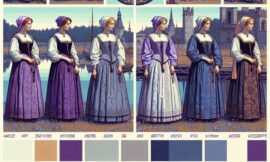Drawing realistic hair is a skill that can elevate your portraits, transforming them from basic sketches into compelling works of art. Whether you’re a budding artist or a seasoned pro, understanding the nuances of hair drawing is essential to capturing the essence and personality of your subject. In this guide, we’ll delve into the myriad aspects of rendering hair, focusing on shading, textures, and the intricate flow of locks that add life to portraits.
The Fundamentals of Hair Drawing
Understanding Hair Anatomy
Before you can draw realistic hair, it’s crucial to understand the basic anatomy. Hair is composed of strands that can vary in thickness, length, and texture. Comprehending these variations will enable you to create dynamic and believable textures. Start by observing different hairstyles and notice the natural flow and fall of the hair. Recognize how strands group together to form larger sections.
Recognizing Different Hair Types
Hair can range from straight and silky to curly and coarse. Each type requires a different approach in shading and texture rendering. Straight hair often reflects more light, resulting in visible sheen, while curly hair’s volume creates intricate shadows. Study reference images to understand how various hair types interact with light and shape.

Creating Texture with Pencils
Choosing the Right Tools
The choice of pencil can significantly affect the outcome of your hair drawings. Hard pencils (like H or 2H) create softer lines, perfect for subtle textures, while softer pencils (like B or 2B) are excellent for deeper shadows and bold lines. Using a combination of these pencils will provide versatility in texture creation.
Layering Techniques
Layering is a pivotal technique in rendering realistic hair. Start with light pencil strokes to outline the basic shape and flow. Gradually build layers, adding depth and volume to the hair. Through multiple layers, you can achieve a rich texture that mimics natural hair. Pay attention to the direction of each stroke, as it should mirror the flow of the hair.
The Art of Shading
Understanding Light Source
The interaction between hair and light is complex. Identify your light source early in the process to guide your shading choices. Consider how light falls on the hair, creating highlights and casting shadows. Highlights should be lighter and shadows should be integrated with shading to provide depth.
Casting Shadows
Shadows in hair add realism and dimension. They’re typically found where hair bunches up or underneath curls. Use softer pencils to blend these areas smoothly into the mid-tones. Remember, too stark a contrast can make the shadows appear unnatural, so aim for a graduated blend.
Flow and Movement
Capturing Natural Flow
Natural flow captures the essence of hair, making it appear dynamic even in still portraits. Begin by sketching the overall direction of the hair flow. Look for how curves and waves intersect. By mapping out these movements, you’ll create a foundation on which to build realistic hair textures.
Imparting Movement through Lines
Lines can convey movement. Use varied pressure to make some strokes lighter and others darker, mimicking the play of light across the hair. This technique adds a lively, three-dimensional effect, making the hair appear to move even though it’s on a static image. Consider how shorter, faster strokes can suggest a more textured, voluminous hair type versus long, smooth strokes for sleeker hair.
Textures in Different Mediums
Using Digital Tools
For digital artists, software offers unique tools to replicate hair textures accurately. Brushes that mimic real-life pencil strokes or custom brushes designed for hair can significantly speed up the process. Experiment with opacity and flow to layer brush strokes effectively, replicating the rich textures seen in traditional media.
Incorporating Mixed Media
Mixing mediums like charcoal and pastels with graphite can yield interesting textures. Charcoal provides rich blacks and great contrast for enhancing shadows, while pastels can highlight reflections and sheens. This combination of tools empowers artists to experiment beyond traditional techniques, resulting in truly unique hair renders.
Drawing realistic hair may seem daunting, but by mastering the core techniques of shading, texture creation, and understanding hair’s natural flow, you’ll be well on your way to creating stunning portraits. Remember, practice is key; observe real-life references, study the play of light, and continue to experiment with different media and tools. Each piece you create is an opportunity to refine your technique and bring your artistic visions to life.






